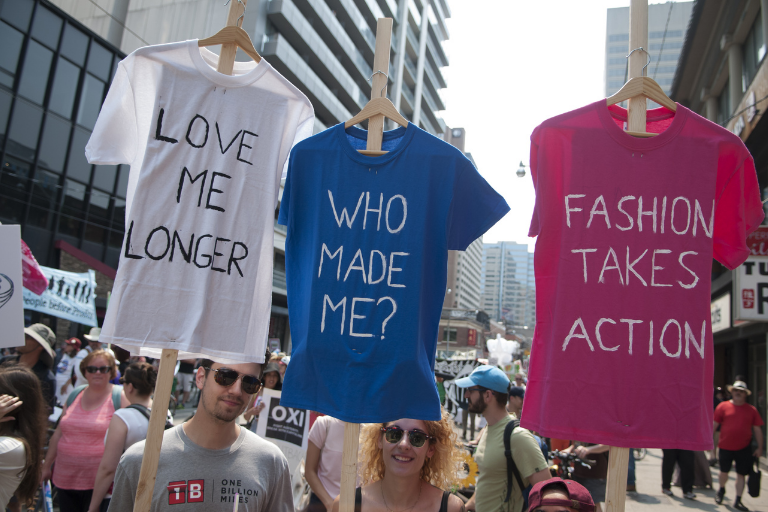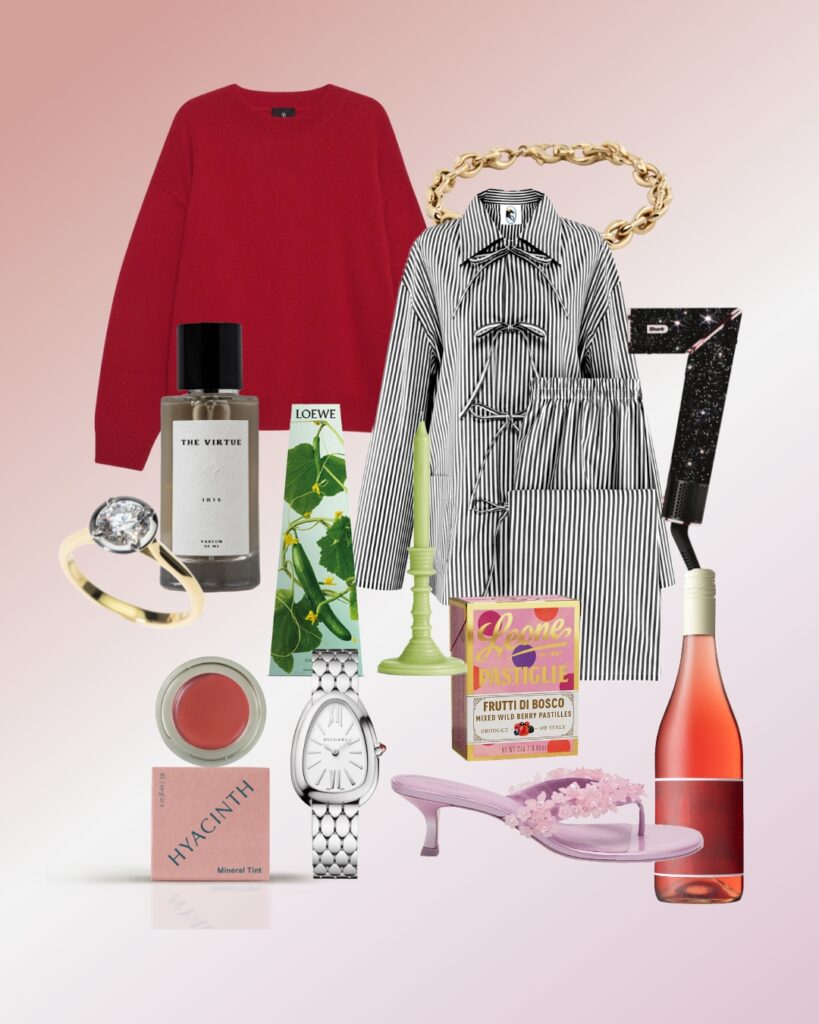
While we all want to be more conscious and considerate when it comes to our clothing choices, the expansive range of information available, confusing terminology, and quickly shifting developments can be overwhelming – not to mention the frustration involved in navigating greenwashed marketing can make you feel, at best, a little helpless.
It’s also important to remember that fashion doesn’t exist in isolation. For the industry here and abroad, one of the biggest discussion points to come out of the Covid-19 crisis is the impact fashion has, and what role it plays in the globalised model of profit-driven capitalism that fuels it.
So as we collectively pause and begin to consider what will clearly be a different future, it’s a good time to assess our own habits and become educated, thoughtful consumers. But where to start? What do all the terms being thrown around by retailers and media alike actually mean?
To make it all a bit easier, we’ve broken down some of the most common terms and buzzwords to help you navigate the movement and improve your choices.
1. Sustainability
Everyone is talking about sustainability, but what does it really mean? The term started to appear in technical reports in the ’70s and ’80s to explain ecological, social and economic advancements that wouldn’t adversely affect conditions for future generations. Use of the term is evolving, but a crucial element that has remained is the importance of striving for a better tomorrow together.
2. Greenwashing
Due to growing consumer pressure, some brands market themselves as sustainable while only making superficial changes – like releasing tokenistic organic ranges, or calling cotton ‘planet friendly’ just because it’s a natural fibre. Truly environment-focused brands will take a holistic approach, provide genuine transparency and be committed to changing their business practice.
3. Transparency
A recent industry study has found fashion companies must come to terms with shoppers’ need to know what happens at every single step of creation, from how the materials are made to how the final product gets into their hands. Call-out culture has supported this with Instagram’s Diet Prada finding social-media fame in chastising brands that are guilty of copying and cultural appropriation.
4. Social enterprises
These initiatives use business to solve social, environmental and cultural problems by supporting and enriching communities. Operating both on and offshore, social enterprises can come in the form of charities, businesses and non-profits. Local examples include Nisa and Companion Co-design, which provide job opportunities, support and ethical working environments for recent migrants.
5. Microplastics
These tiny pieces of plastic, anything less than 5mm in length, end up in our water, soil and air. Microplastics (and even smaller nanoplastics) come from debris and waste, including the particles that enter the water when washing synthetic clothing. They are harmful to our environment (being ingested by wildlife and polluting our planet) and, potentially, to our health.
6. Repair
A key part of a circular economy, repairing a garment rather than throwing it out is a forgotten art, and vital to minimising fashion’s environmental impact. Learn how to do basic repairs such as sewing a button, repairing a hem or darning a hole. Many local brands, including Kate Sylvester, now offer complimentary mending.
7. Carbon neutrality
Companies can become carbon neutral by investing in environmental projects to offset their carbon footprint, including planting more trees to convert carbon dioxide to oxygen, or developing smart technologies.
8. Pollution and water
While the oft-repeated statement that fashion is the second-most polluting industry in the world has been proven false, the industry is still a dirty one, producing 10 percent of all global greenhouse-gas emissions. It’s a thirsty one too. According to the 2017 Waste and Resources Action Programme (WRAP) report, the average water footprint of a kilo of cotton (equivalent to a pair of jeans and a shirt) is 10,000–20,000 litres. And the World Bank estimates the industry is responsible for nearly 20 percent of all industrial water pollution. It’s all the more reason to think before you buy. WRAP has calculated that extending the life of one item of clothing by just nine extra months of active use would reduce its carbon, water and waste footprint by around 20–30 percent.
9. The rental and resale marketplace
As we’ve all become more aware of the impact of our purchases, several smart start-ups, including Designer Wardrobe in New Zealand, have created rental and resale platforms so we can share each other’s style. While some people worry rentals can perpetuate a wear-once culture, and that resale can become an excuse to impulse purchase (i.e. if you don’t love it, you can always sell it later), these avenues disrupt ideas of traditional ownership and help to extend the use of garments. It’s about rethinking the way we wear – and that’s what we need right now.
Read more: Why the second-life designer re-sale market is quickly taking over fast fashion.
10. Cruelty-free
This term is used to describe fashion that has been made without harming others. It includes vegan garments that sidestep animal products, such as alter-nappa made from polyester, and faux fur, which is often made with acrylic. Synthetic substitutes raise environmental alarm bells given they are non-biodegradable, but industry leaders are researching healthier alternatives, including Piñatex leather, produced from pineapple fibres, and Koba faux fur, a recyclable innovation made from plant-based materials.
11. Custom-made
First the norm then a luxury, custom-made clothing is having a comeback. Offering a perfect fit, it fosters more love and longevity. Brands don’t need to produce and hold inventory, minimising waste. ‘Custom made’ covers several methods: made-to-order garments come from a standard pattern and fabric but are only produced once ordered; made-to-measure alters a standard pattern to your personal specifications; bespoke clothing is patterned to your measurements; and couture is made to your specifications (by hand) from start to finish.
Read more: How the founders behind made-to-order brand Florence & Fortitude are moving the needle on sustainable luxury.
12. Fourth industrial revolution
The first Industrial Revolution in the 18th century introduced factory manufacturing for mass-scale production. Now we have reached the Fourth Industrial Revolution, where digital, biological and physical innovations are helping us produce in a smarter, and more sustainable, way. For fashion, a good example of this is the rise in companies investing in no-wash clothes with material-production technologies and treatments that ensure less harmful laundry loads.
13. New Zealand made
Increasingly less common due to the high cost of manufacturing and a dwindling pool of local workers, New Zealand-made fashion is not only high-quality and unique, it’s worth investing in for social and economic reasons. Locally manufactured clothing provides jobs. Keeping industry on home soil allows greater transparency, and our stringent labour laws mean workers are more likely to have safe working conditions and fair pay. Locally made clothing also has a smaller carbon footprint, as it requires fewer shipping miles and is less likely to have been produced using energy from fossil fuels. Many brands are still committed to producing clothing here, such as Standard Issue and Staple + Cloth.
Read more: Rachel Mills talks about the frustrations and future of local manufacturing.
14. Collective action
The fashion industry revolves around the economies of scale, which for smaller designers especially can be hard to navigate on an everyday level – let alone when attempting to make their brand more sustainable. Cost presents a hurdle too; research and development are expensive, as are innovative new materials and logistics. For a traditionally competitive and secretive industry, hope for the future lies in collaboration. Local initiative Mindful Fashion, founded by Kate Sylvester and Ruby’s Emily Miller-Sharma, is an industry collective that aims to provide strength in numbers by sharing auditing costs, galvanising local suppliers, securing sustainable fabrics and supporting ethical manufacturing.
15. Living wage
Unlike the minimum wage, a living wage is defined as the income necessary to meet a person’s basic needs, and those of their family.
16. Lab-grown materials
As demand for cruelty-free fabrics grows, biofabrication, using biological materials as building blocks to create new materials, is becoming a growth area. The US company Modern Meadow uses fermentation processes to build collagen protein and create its animal-free leathers, while other firms are looking into lab-grown silks to protect silkworms and lab-grown diamonds to rule out health and safety concerns for diamond miners across the world.
17. Circularity
A circular economy is based on three principles: designing out waste, keeping materials in use and regenerating ecosystems. Products are developed with future use in mind, raw materials are reusable and biodegradable, unwanted garments are recovered and regenerated by mechanical or chemical systems, and waste and by-products from other industries are harnessed. A circular model also includes upcycling, rental and resale. Achieving circularity requires innovation, government support, logistics investment, commitment to renewable energy, and the onshoring of industry. Circularity is currently being explored by businesses such as Patagonia, Levi’s and Econyl (a regenerated textile used by Prada, Kowtow and others). Look for the Cradle to Cradle certification.
Read more: What does that label mean? We decode some common clothing certifications.
18. Culturally conscious
It’s crucial to engage with other cultures in a respectful, sensitive way. Culturally conscious consumerism can be practised by understanding the origins of a garment, and investing in work by custodians of the craft. This provides opportunities for marginalised groups to gain economic security, while also preserving knowledge, tradition and skills. Seek out artisans or markets rather than tourist shops, pay a fair price and do your research. Locally, visit Trade Aid, which supports ethical production and the living wage, or find independent makers. Avoid cultural appropriation (when members of a dominant or powerful culture borrow elements from an oppressed or marginalised culture) by thoroughly investigating the significance and history of the item. If in doubt, don’t do it.
19. Gender equality
Fashion is driven by women’s money, creativity, skill and work. The majority of garment workers are women and/or people of colour, making exploitation a racial and gendered issue. Women dominate other sectors of the industry too, such as marketing and journalism, but when it comes to power (and money) men still take top billing. According to McKinsey, only 14 percent of major brands have a woman in charge. Fashion itself is judged harshly; as with many female-dominated interests it has long been seen as frivolous and less worthy of respect, and now much of the environmental criticism of fashion centres on women’s actions, responsibility and guilt. To begin combatting gender inequality, demand transparency, investigate ethical certifications and pay parity, and support brands created or led by women, especially those from minority groups.
20. 3D printing
Fashion innovators have high hopes for at-home 3D printing – not only can it cut out production intermediaries and transport but it ensures the person in control of the printer gets exactly what they want. While there is still work to be done before it’s accessible to all, 3D-printed dresses by Zac Posen have already graced the Met Gala red carpet.
21. Slow fashion
Slow fashion is the antithesis of fast fashion, championing local and small-scale fashion producers. Like the slow-food movement that inspired it, slow fashion is always evolving as it urges us to be more aware of our shopping choices and their consequences.
22. Virtual clothing
Fashion brands are banking on digital wardrobes by selling virtual 3D-rendered clothing designs that do not exist in the real world but can be super-imposed over your photos or avatar. It sounds farfetched but there have been some successful examples already, including Louis Vuitton’s collaboration with the League of Legends video game.
23. Landfill
Fast fashion has made clothing cheaper than ever, but because we value it less, we treat it as disposable. Manufacturing waste and faulty garments often go straight to landfill too, so the more we produce, the more waste there is. Consider the volume of online returns. Many big companies lack the logistics to sort through them, meaning they may simply be tossed out. Clothing bins and op shops can become inundated with donations from well-meaning people, so much so that some of this ends up in landfill, especially as markets such as Rwanda fight against poor-quality secondhand imports.
24. Packaging innovations
Many brands are switching to biodegradable courier bags for online purchases. Businesses including The Better Packaging Co offer bags that are home compostable. Locally, Ruby has been introducing compostable packaging across its supply chain and stores, and to phase out single-use items they are charging customers for paper carrier bags (with 100 percent of proceeds going to charity).
25. Climate change
Simply put, this describes changes in the earth’s climate. A key part of climate change is global warming, caused by an increase in greenhouse gases, such as carbon dioxide, in the atmosphere. Effects include rising sea levels, drought, severe weather events, species extinction, disease, freshwater shortages, vulnerable food supplies and more. The fashion industry contributes negatively to climate change through carbon emissions, energy and water consumption, pollution, waste, and use of petrochemicals. This needs to change.
This feature originally ran in Fashion Quarterly Issue 1 2020.










